How to Rollover a 401k Into an IRA
Introduction: Rolling over your 401(k) into an Individual Retirement Account (IRA) is a pivotal financial decision that can have a significant impact on your retirement savings. It offers numerous benefits, including more investment choices, greater control, and potential tax advantages. In this blog post, we will walk you through the process and highlight the key considerations when making this transition.
Why Consider Rolling Over Your 401(k) into an IRA?
-
Diversification of Investments: One of the primary advantages of rolling over your 401(k) into an IRA is the expanded investment options. While 401(k) plans usually have a limited selection of investment choices, an IRA provides a much wider range of investment opportunities, including stocks, bonds, mutual funds, and even alternative investments like real estate.
-
Greater Control: With an IRA, you gain more control over your investments. You can choose your own investment strategies, adjust your portfolio according to your risk tolerance, and react more flexibly to market conditions.
-
Potential for Lower Fees: 401(k) plans often come with administrative and management fees. By rolling over your 401(k) into an IRA, you may have the opportunity to choose low-cost investment options and reduce your overall fees, potentially increasing your returns.
-
Consolidation and Simplification: If you've had multiple jobs with different 401(k) plans, rolling them over into a single IRA can simplify your financial life. It's easier to keep track of your retirement savings and manage your investments from one account.
The Rollover Process:
-
Eligibility: Not everyone can roll over a 401(k) into an IRA. Ensure that you are eligible to do so. In most cases, if you have left your job, retired, or your employer's plan allows for in-service withdrawals, you should be eligible.
-
Choose the Right IRA: You have two primary choices when it comes to an IRA: a Traditional IRA or a Roth IRA. The decision depends on your tax situation and financial goals. Traditional IRAs offer tax-deferred growth, while Roth IRAs provide tax-free withdrawals in retirement.
-
Open an IRA Account: If you don't already have an IRA, you'll need to open one with a reputable financial institution. You can choose from banks, credit unions, or brokerage firms.
-
Request a Direct Rollover: To avoid taxes and penalties, it's crucial to initiate a direct rollover from your 401(k) to your IRA. Your former employer's plan administrator can assist you in this process.
-
Choose Your Investments: Once the funds are in your IRA, select your investments based on your financial goals, risk tolerance, and time horizon.
Considerations and Caution:
-
Tax Implications: Depending on your 401(k) type and the IRA you choose, there may be tax consequences. Consult with a tax professional to understand the tax implications of your rollover.
-
Fees and Expenses: Be aware of the fees associated with your IRA account, such as maintenance fees, trading costs, and expense ratios of the investments you choose.
-
Financial Advice: If you're uncertain about the rollover process or investment choices, seek advice from a financial advisor who specializes in retirement planning.
-
Beneficiary Designation: Review and update your beneficiary designation to ensure your assets pass to your intended beneficiaries.
Rolling over your 401(k) into an IRA is a strategic move that can enhance your retirement prospects. It provides you with greater control over your investments, more diverse options, and potential tax advantages. However, it's essential to carefully consider the process, tax implications, and investment choices. If you're uncertain, consult with a financial advisor who can guide you through the transition and help you make the most of your retirement savings. Remember, the earlier you start planning, the better positioned you'll be to enjoy a comfortable retirement.

